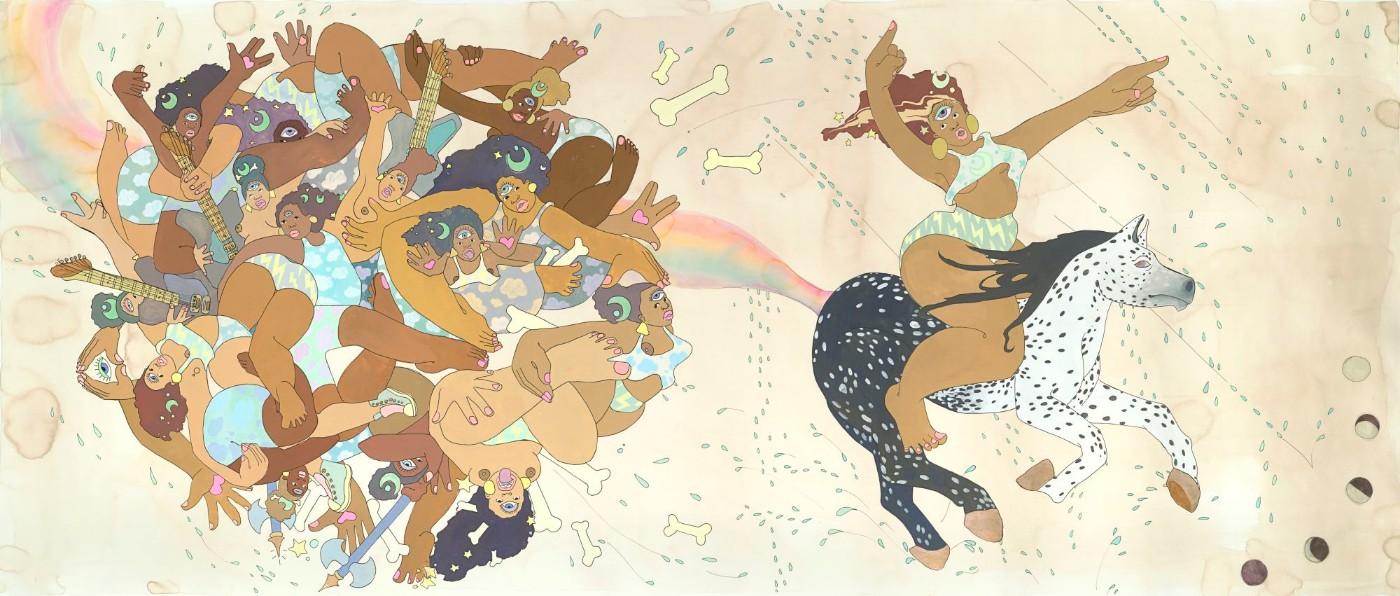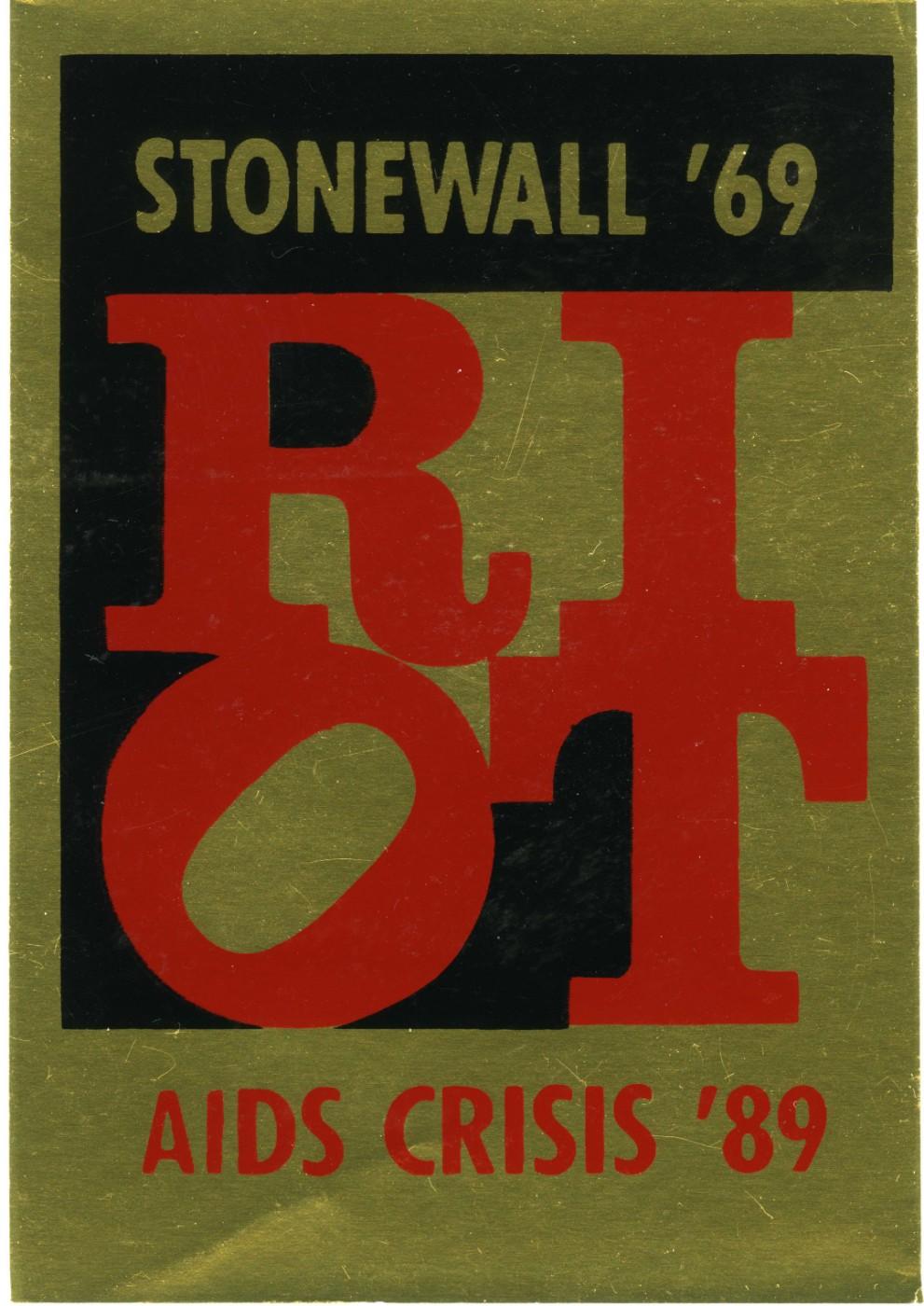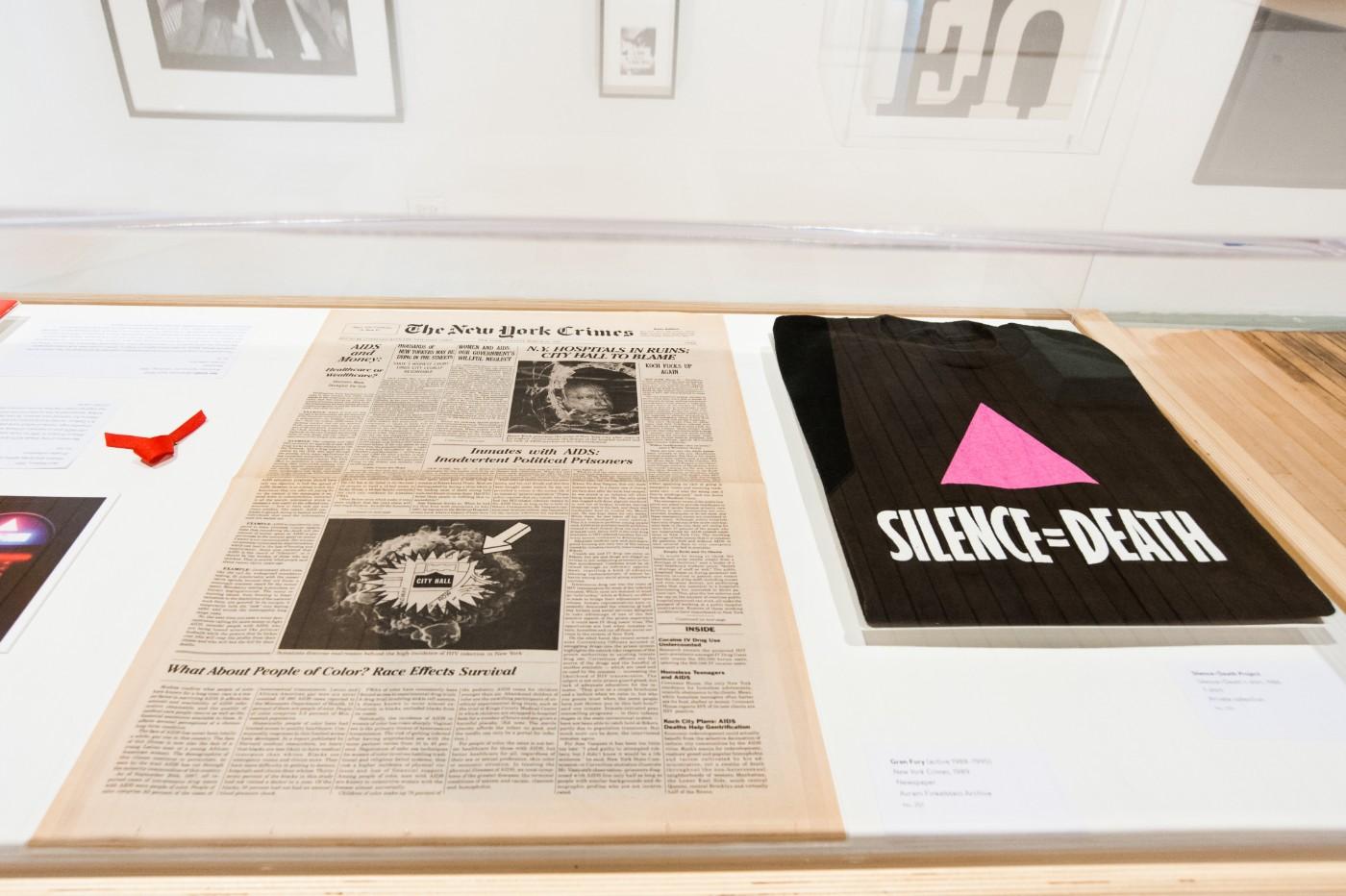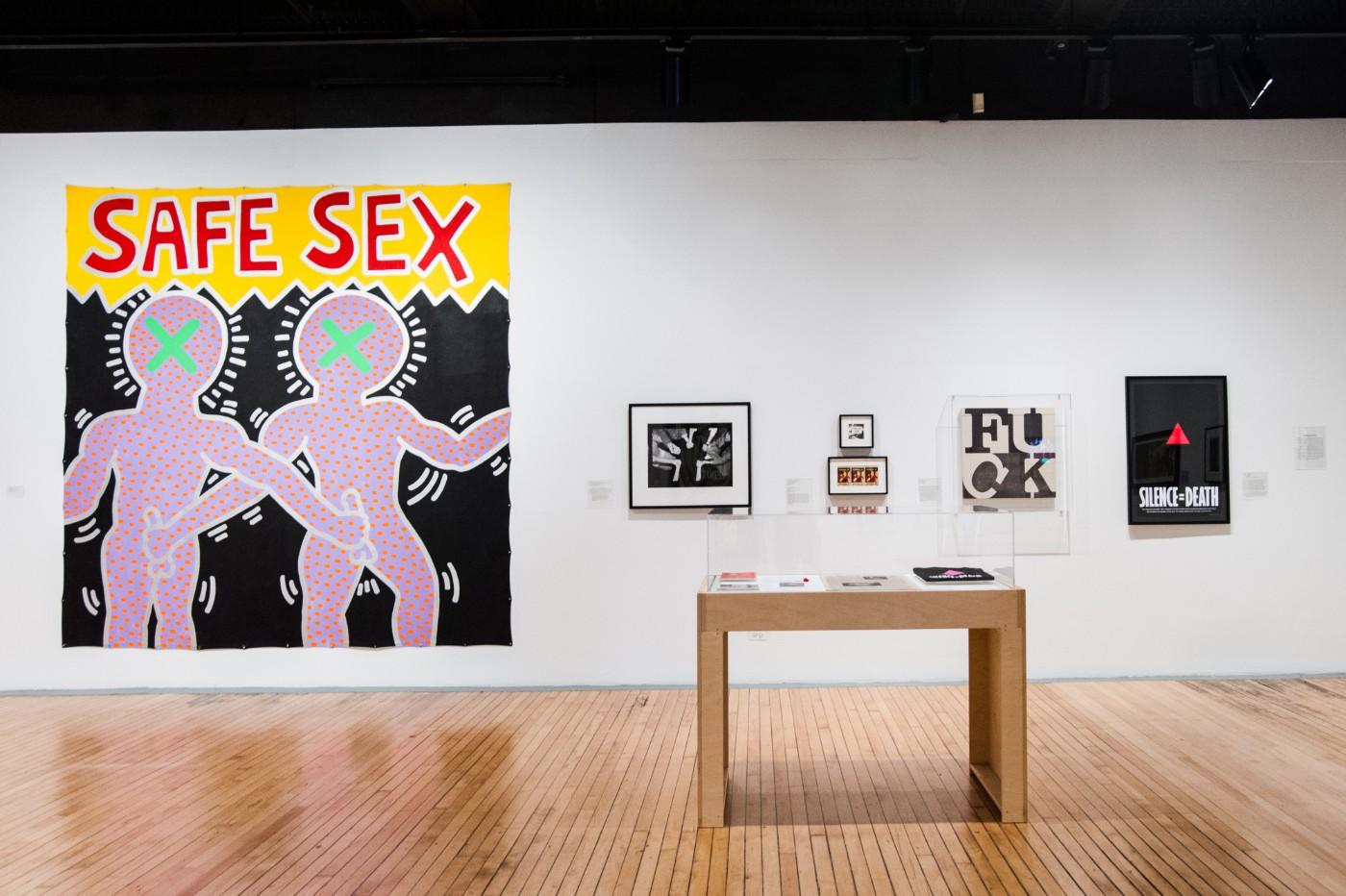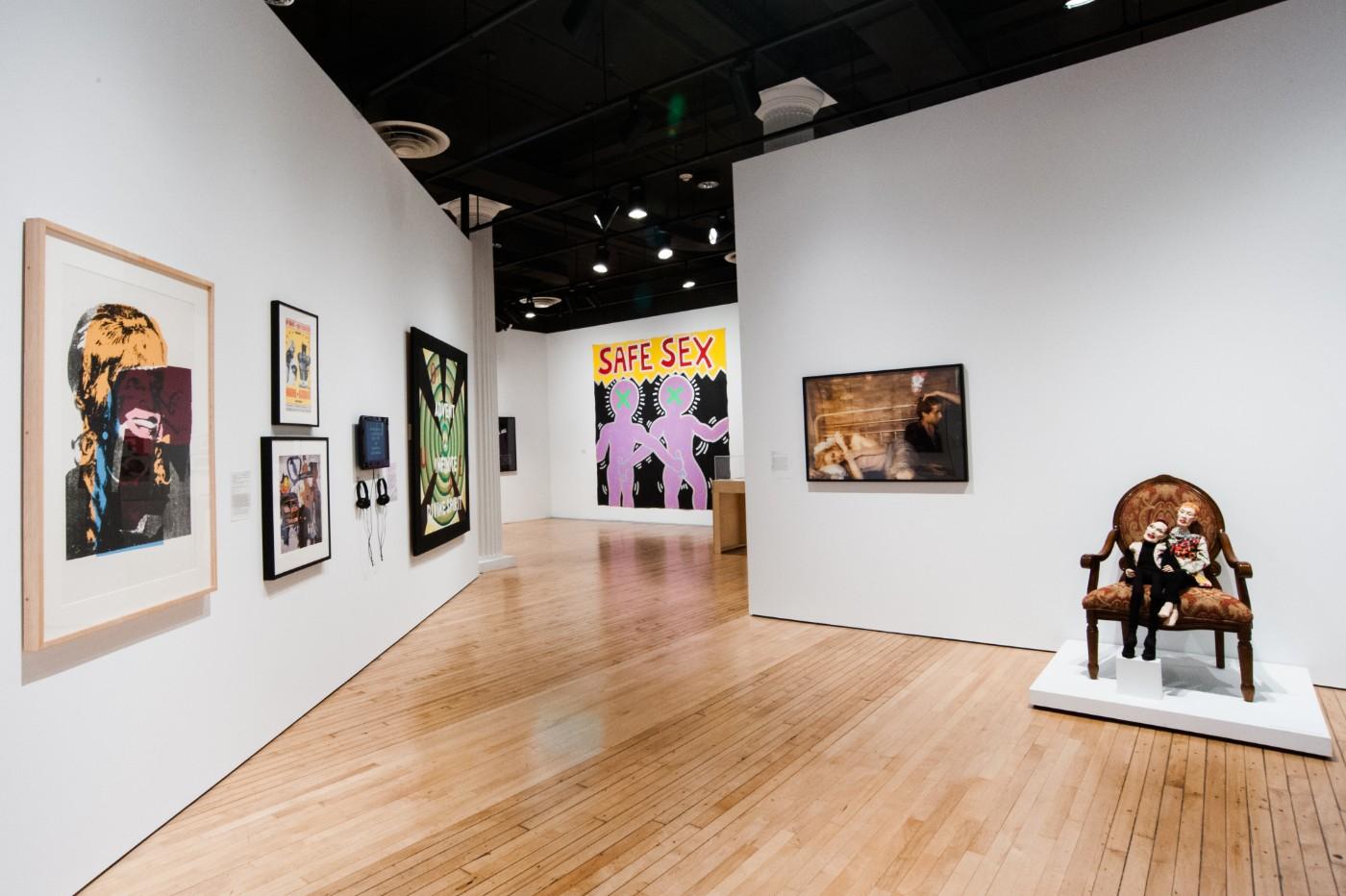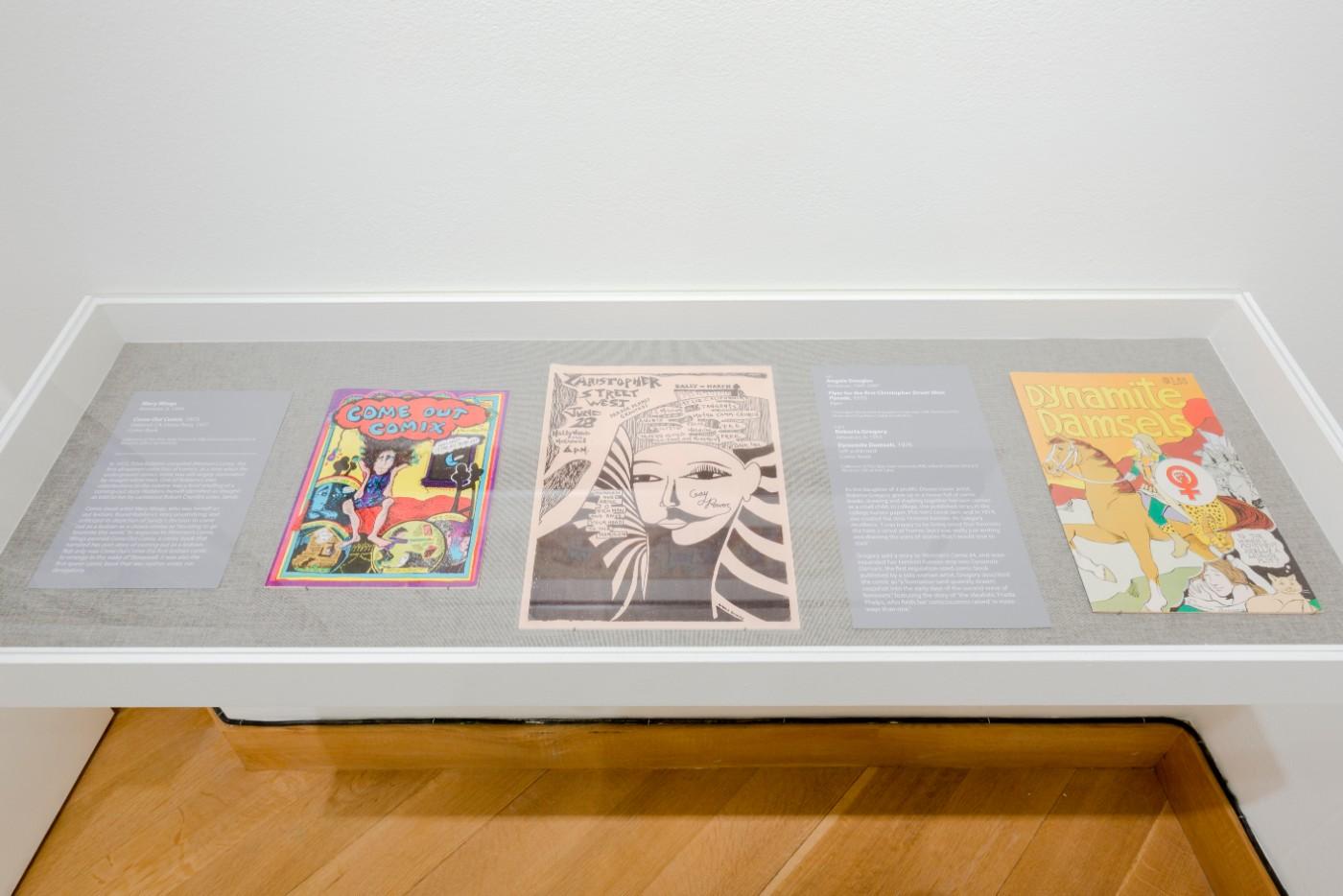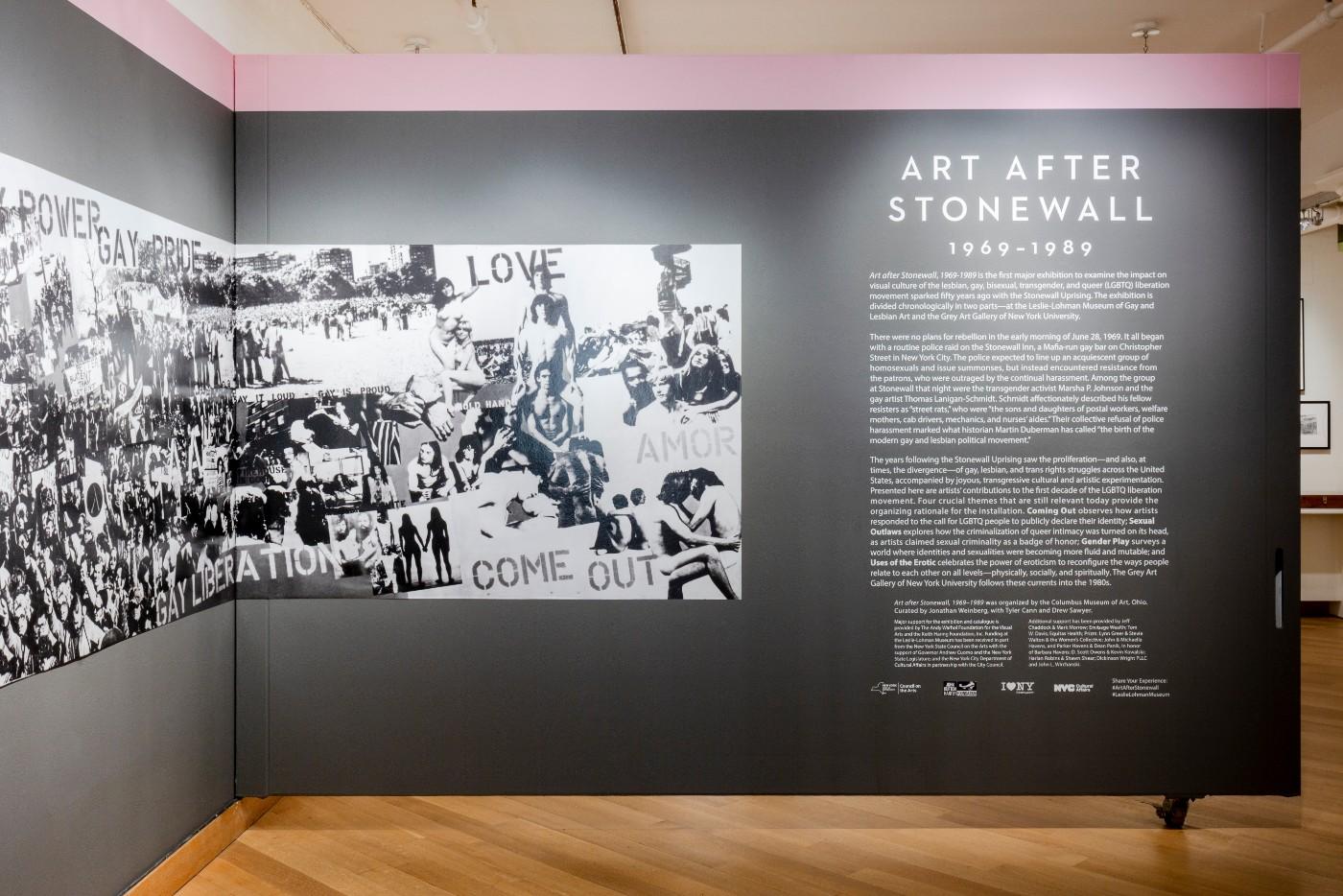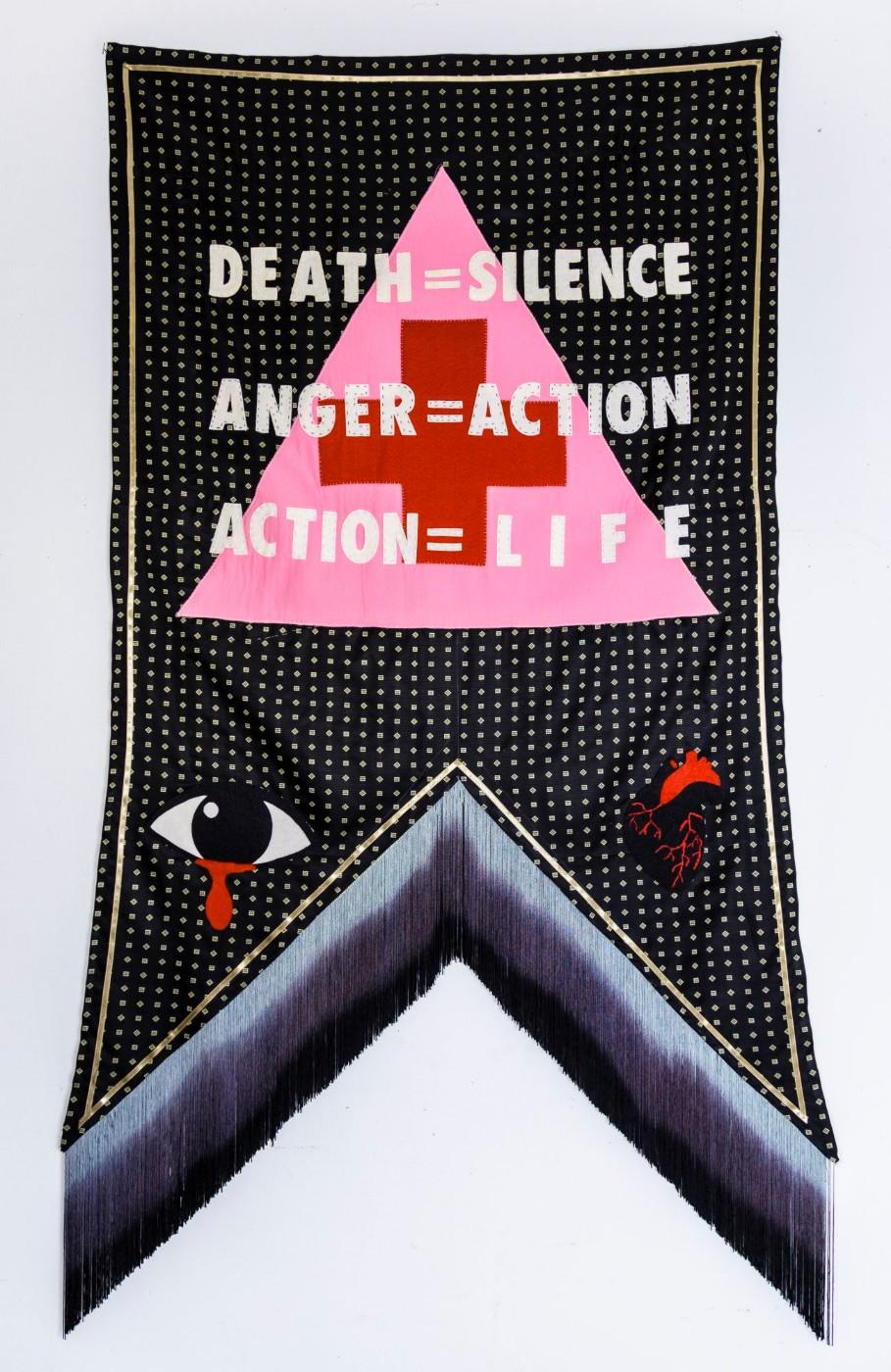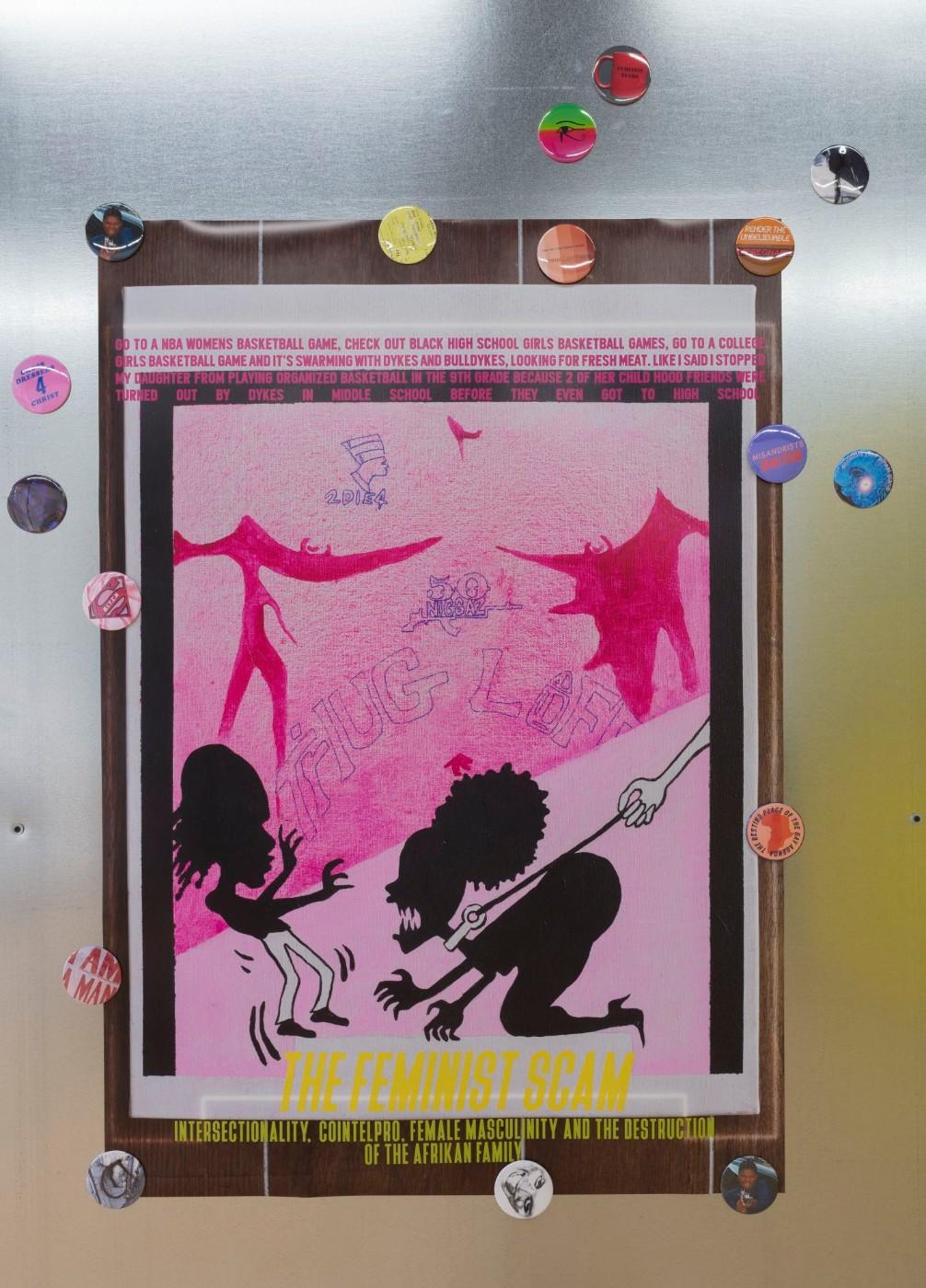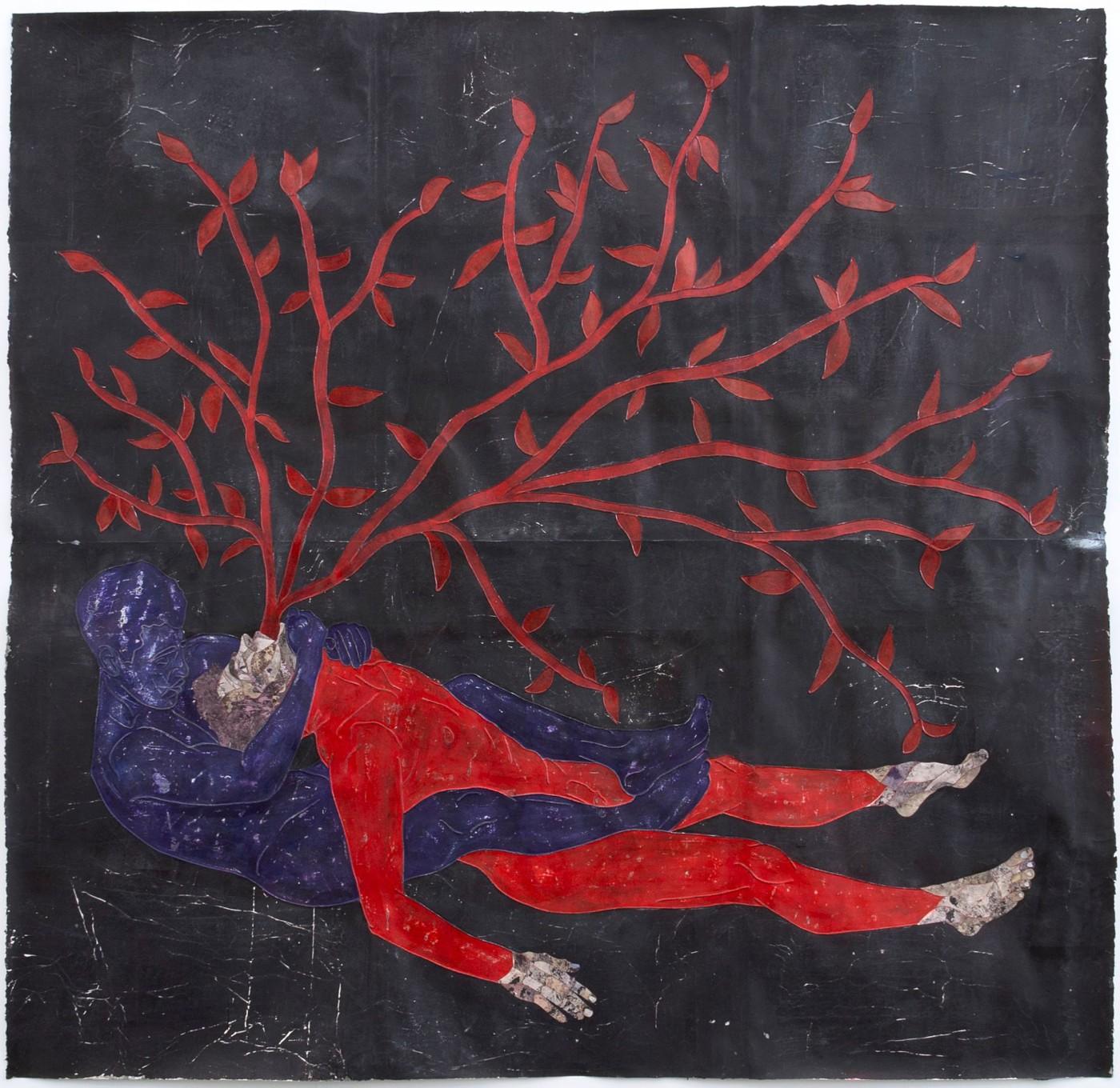The show at Grey ranges widely across the twenty-year span. There are major photographers–Robert Mapplethorpe, Peter Hujar, Nan Goldin and Annie Leibovitz–as expected, and early work from Lyle Ashton Harris and Dona Ann McAdams. Gran Fury’s RIOT stickers, which situate the word “riot” between “Stonewall ‘69” and “AIDS ‘89” serve as a neat summary of the show’s bookends. There’s naturally a “Silence + Death” poster, and one for “VisualAIDs,” as well, a group without which a great deal of art, perhaps even some featured in the show, would no longer exist.
It’s hard not to be impressed by how fresh and engaging much of this work feels. So much of it was made not with concern for the art world’s establishment but with open antipathy for it. Pieces of the cultural story help ground the Grey show, and they exert real, accumulative power at Leslie-Lohman. There, modest offerings like Nancy Fried’s small, homely sculptures of flour, salt and acrylic, or Roberta Gregory’s Dynamite Damsels comic book, circa 1976, line up alongside an impressive list of contemporaneous publications like issues of On Our Backs and Azalea: A Magazine for Third-World Lesbians. The exhibition also recasts Gordon Matta-Clark’s Day’s End: Pier 52 photos in their full context, acknowledging the space was a hotbed for cruising at the time, a fact the photographer found uncomfortable, at best. Add a delightful array of video installations, including Tricia’s Wedding by Sebastian and the Cockettes, and Barbara Hammer’s Dyketactics, running at their full lengths, and there’s enough on hand to reward repeat visits.




